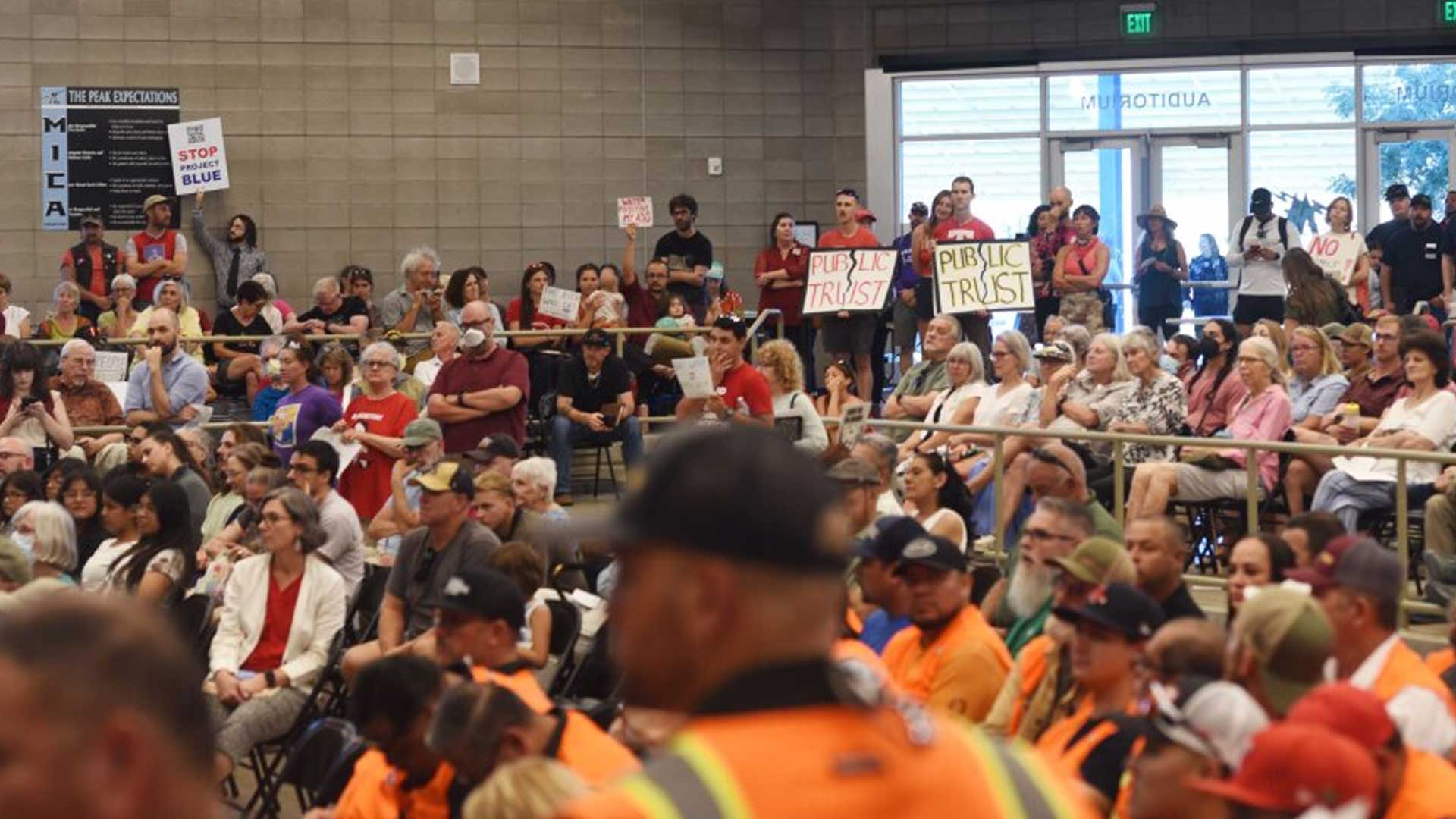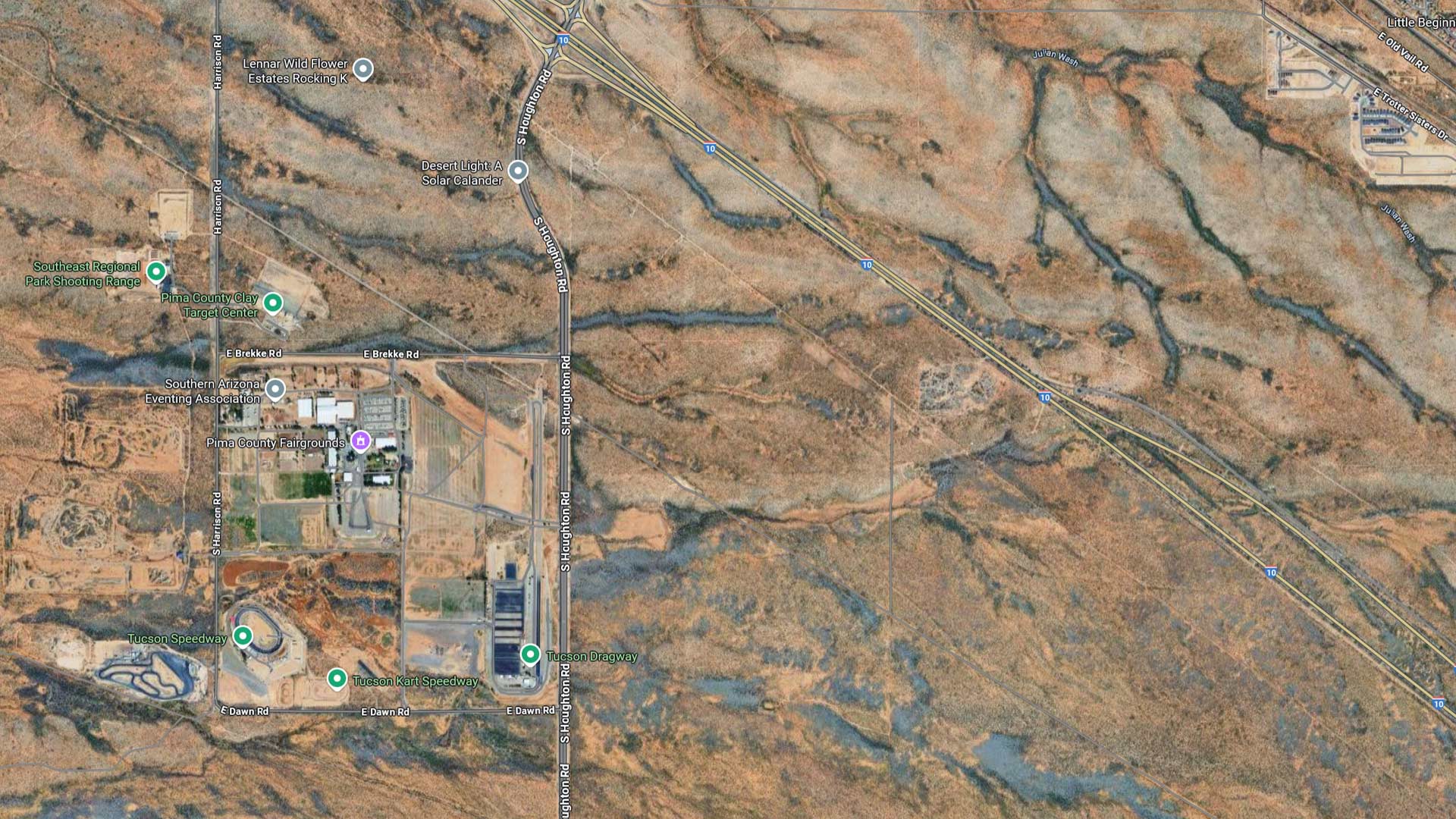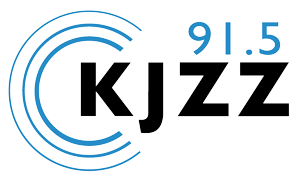 Representatives with Beale Infrastructure joined Tucson officials to give information about Project Blue during a meeting on Wednesday, July 23, 2025, held at Mica Mountain High School in Tucson’s far southeast side.
Representatives with Beale Infrastructure joined Tucson officials to give information about Project Blue during a meeting on Wednesday, July 23, 2025, held at Mica Mountain High School in Tucson’s far southeast side.
Many attendees held up signs opposing the project and several rounds of booing rang out as presenters gave details about the project. Cheers rang out from some parts of the crowd when the meeting touched on the plan’s economic impact.
Representatives with Beale Infrastructure, the company behind the project, joined city officials to give information and answer questions about Project Blue during the meeting Wednesday night, held at Mica Mountain High School in Tucson’s far southeast side.
Project Blue would encompass a roughly 290-acre stretch and require some 440 acre feet of water a year initially — and 1,910 acre feet annually at full build out.
It would also use potable water for the first two years while an 18-foot pipeline for reclaimed water pipeline is being built.
Both Tucson and Tucson Electric Power, or TEP, had early non-disclosure agreements for the proposed Project Blue — obscuring some details about development and which companies are involved. But the Arizona Luminaria reports a county memo from 2023 lists Amazon Web Services as the company behind the project.
 The proposed site of the "Project Blue" data center, near the Pima County Fairgrounds.
The proposed site of the "Project Blue" data center, near the Pima County Fairgrounds.
Speaking at the meeting Wednesday, Tucsonan Jordan Ochoa said she was concerned about a lack of transparency.
“These appear to be the confusion about who is leading the project, uncertainty about who is benefitting from this project, and the concern of how our public resources are being used — especially water and electricity,” she said.
But Fernando Lebron — with the Sheet Metal Workers Union, Local 359 — said he supported the $3.6 billion project.
“It’s a game changer for working families,” he said. “Project Blue will create thousands of union construction jobs, putting local tradespeople to work, building something that will power Arizona’s future.”
Beale Infrastructure has said the project will replenish 100% of the water it uses during its initial face and offset the use of reclaimed water after that. But Eliseo Gomez, a public school science teacher in Tucson and a member of a coalition opposing Project Blue, says researchers and community members still worry the project could dry up parts of the Santa Cruz River.
“Which means the destruction of all that wildlife habitat, birds, snakes turtles, dragonflies, wetland vegetation, that lives there and calls it home. That would mean the elimination of Pima County’s Living River of Words program,” Gomez said.
Pima County leaders approved the land sale in June and the proposal now sits with city leaders. Another community meeting is planned for next week.


By submitting your comments, you hereby give AZPM the right to post your comments and potentially use them in any other form of media operated by this institution.